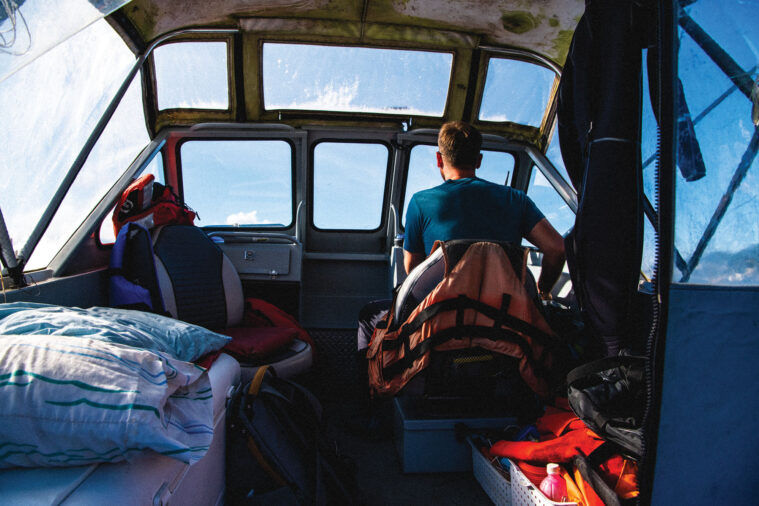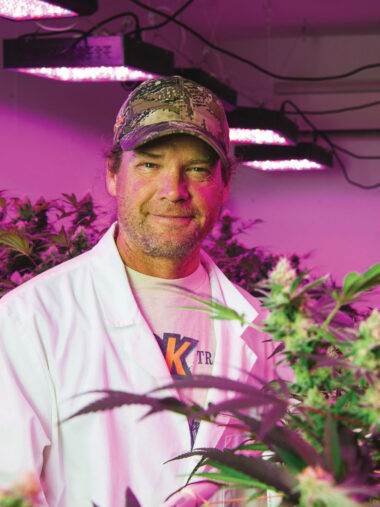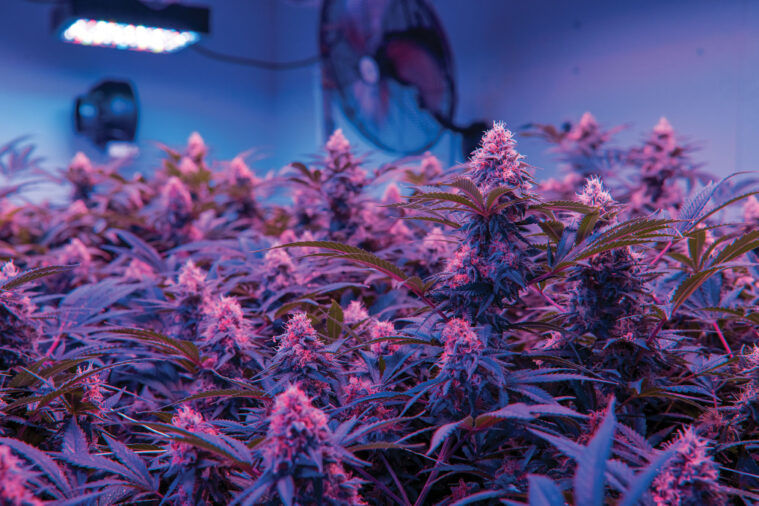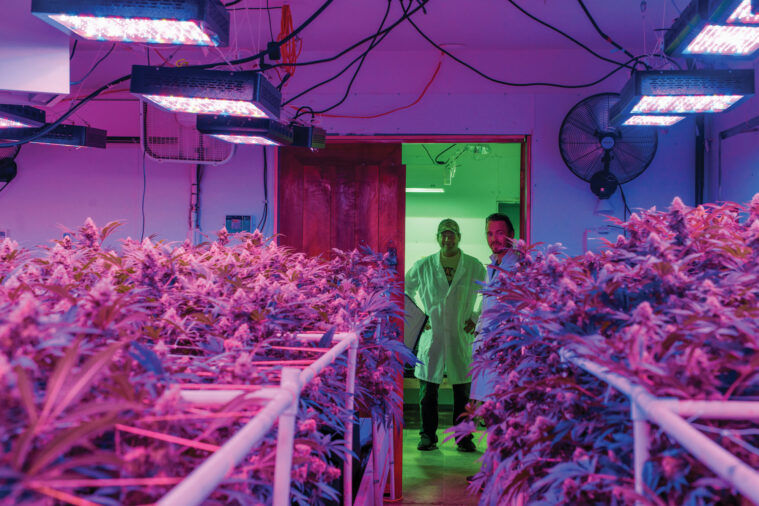Just off the coast of Ketchikan in Southeast Alaska is a 21-mile long strip of land called Gravina Island. Famed as the proposed site of the failed $398 million “Bridge to Nowhere,” the island is home to Ketchikan’s airport and is still only accessible via a seven-minute ferry ride across the Tongass Narrows. Although Ketchikan’s temperate climate prevents the Narrows from freezing during the winter, parts of Gravina Island are exclusively reachable during high tide. It’s in this idyllic seclusion that Stoney Moose Farms has built its business.
Stoney Moose Farms’ Cannabis oasis is situated on a three-acre plot of land that houses a barn with 180 Cannabis plants, a greenhouse, an apple orchard, and a modest dwelling where head grower John Knechtel has made his home for the past year.

Stoney Moose Farms’ Cannabis oasis is situated on a three-acre plot of land that houses a barn with 180 Cannabis plants, a greenhouse, an apple orchard, and a modest dwelling where head grower John Knechtel has made his home for the past year.

“I’m not built for this world; I’m built for 200 years ago,” says Knechtel with a wry smile. “I love having the opportunity to be somewhere remote where I am in control of my life and destiny while working on something I am passionate about.”
Despite Knechtel’s admiration of the island, there is a unique set of challenges that comes with growing in the region. The island itself is covered in muskeg – an acidic soil commonly found in the Arctic and boreal regions, although it is in other northern climates as well. Muskeg consists of dead plants in various states of decomposition, including sphagnum moss, which can hold 15 to 30 times its weight in water and wood fragments. The result is a spongy, waterlogged terrain that is both strange and dangerous for the unaccustomed. With the non-viable local soil and the difficulty of importing goods, Stoney Moose Farms approached their soil issue with ingenuity.
“The soil is the key! Each planter is its own environment, keeping each plant alive,” explains Knechtel as he grabs a handful of the soil.
In the farm’s grow basement, Knechtel “cooks” the organic soil used to grow their crop. Locally-sourced, the soil is created by utilizing ingredients native to the area, including crab mill, oyster shells, and kelp. The unique blend is so nutrient-rich that Knechtel says his growers hardly have to feed the plants during their grow cycle.

Along with this nutrient-rich soil, the plants are watered with collected rainwater from the farm’s four rain collection water tanks, which hold up to 20,000 gallons of rainwater. If Ketchikan’s average of 234 yearly rainy days doesn’t keep the tanks full, the farm also has the ability to replenish the tanks from a nearby creek.
Naturally, nutrients are just one component of what makes the farm successful. The other is undoubtedly Knechtel, whose passion for Cannabis is above reproach.

“It’s so great to live in a legal time,” Knechtel says over the sounds of The Grateful Dead as he opens the door to a room of beautiful budding plants. “It’s not just about the THC content. It’s about the smell and taste. It’s about the full enjoyment.”
Knechtel’s grow room is packed full of plants, but he is currently only growing three distinct strains intended for a variety of consumers. Knechtel recommends Honey Trap for day smokers, while those looking for a mellow indica should gravitate towards Blue Wizard. But Knechtel’s crown jewel is his Gravina Lemonade, which he says has been testing as high as 28 percent THC. Although Knechtel has considered growing additional strains, he believes in maximizing the farm’s space while providing a consistent grow.
“Each strain needs different attention, so finding three to four strains that work well together is the dream,” he says. “Ultimately, herb is medicine. So, I am just happy if I can provide people with some relief and enjoyment.”










